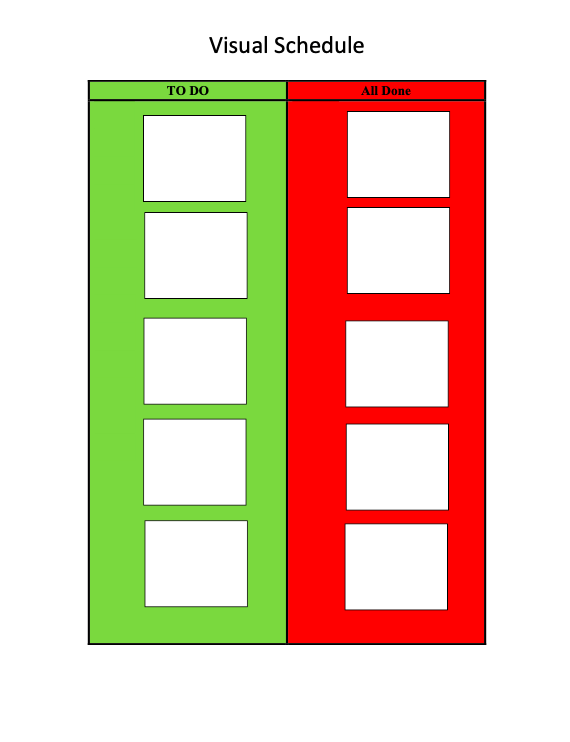Tip of the Week
- Find a way to implement more structure at home-- especially if it has been shown to be effective in the past. If your child has attended school at some point, their classroom likely had some sort of structure or routine that helped them to get through the day.
- Depending on your child's current level of functioning, this might look like implementing a visual schedule (a list of picture icons that demonstrate activities to be completed) or maybe even a "to do list" (for older kiddos).
- Be sure to include plenty of choices to create a sense of control for your child and consider intermixing maybe not so preferred with preferred.
- Give your little one some time to learn the system (will likely require prompting) and remember to give lots of reinforcement and social praise for following the schedule in absence of negative behaviors.
- Creating structure, helping with transitions and signaling to your child what comes next.
- In some cases, this strategy may also be useful in gaining compliance with non preferred tasks like school or chores. It may be beneficial for your child or student to see that once it's completed, they can engage in a much more preferred activity.
*Disclosure: The information listed in this post does not serve to make any specific treatment recommendations for your child. It is made available to you for informational purposes only.*
References
Dettmer, S., Simpson, R., Myles, B., & Ganz, J. (2000). The use of visual supports to facilitate transitions of
students with autism. Focus on Autism and Other Developmental Disabilities, 15, 163-169.
Flannery, K. & Horner, R. (1994). The relationship between predictability and problem behavior for students with
severe disabilities. Journal of Behavioral Education, 4, 157-176.
Mesibov, G., Shea, V., & Schopler, E. (2005). The TEACCH approach to autism spectrum disorders. New York, NY:Plenum Publishers.
Sainato, D., Strain, P., Lefebvre, D., & Rapp, N. (1987). Facilitating transition times with handicapped preschool children: A comparison between peer mediated and antecedent prompt procedures. Journal of Applied Behavior Analysis, 20, 285-291.
Schmit, J., Alper, S., Raschke, D., & Ryndak, D. (2000). Effects of using a photographic cueing package during routine school transitions with a child who has autism. Mental Retardation, 38, 131-137.
Sterling-Turner, H. & Jordan, S. (2007). Interventions addressing transition difficulties for individuals with autism. Psychology in the Schools, 44, 681-690.
